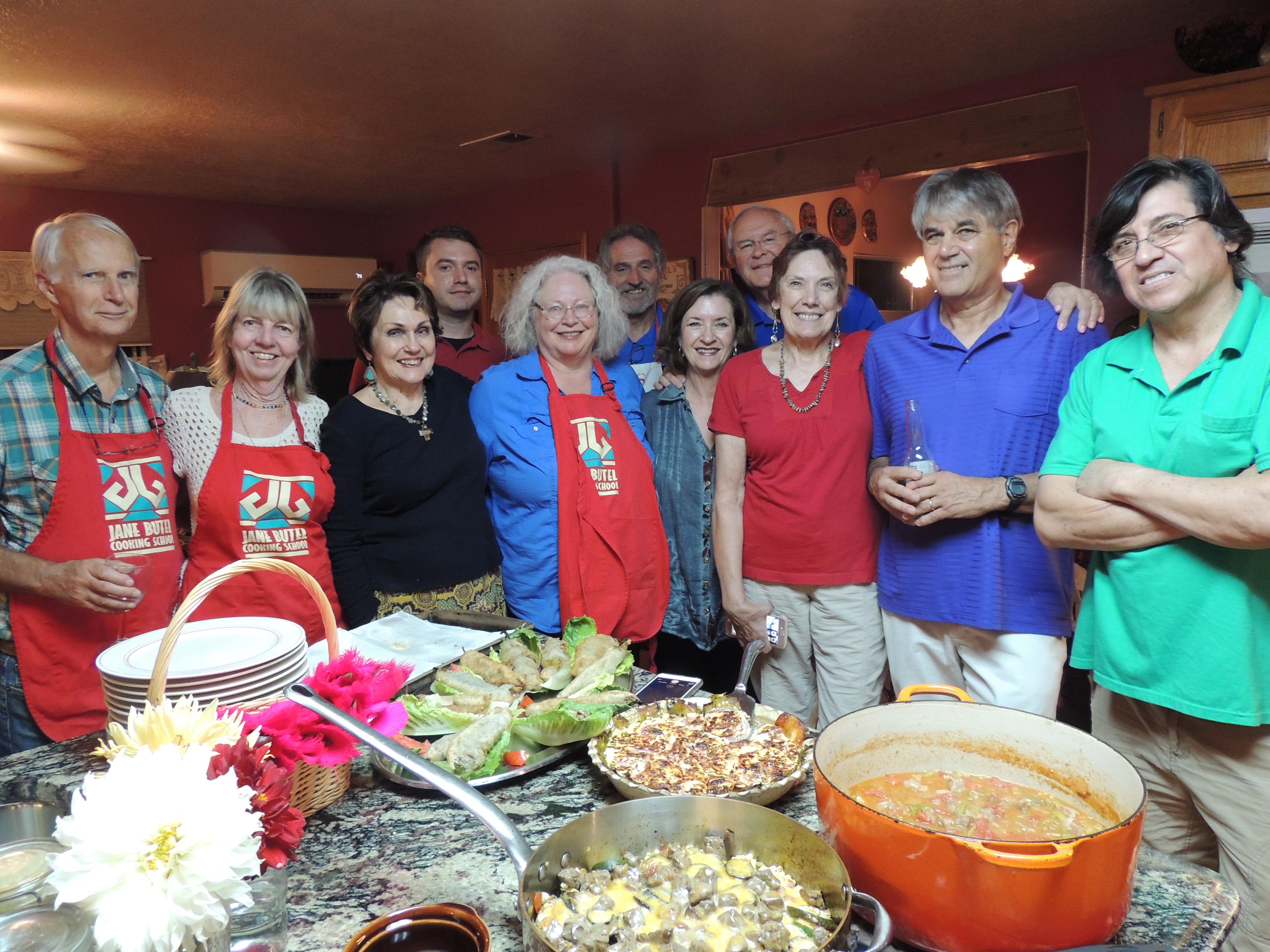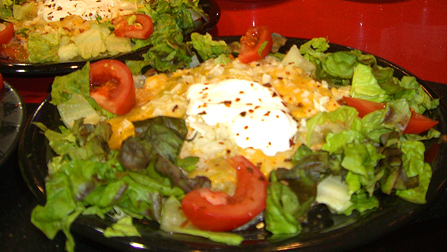Chile Facts--How to Tell a Hotter Chile
 Do you know how to tell a hotter chile? If you prefer chiles of a particular piquancy or heat level--you should know this. Why? Because chiles do not stay true to their DNA...or variety. The moisture on the roots and amount of sun shine at the time of "fruiting" --the time when the chile becomes a fruit creates a permanent imprint or heat level for the chile. That's right chiles are a fruit, not a vegetable.
Do you know how to tell a hotter chile? If you prefer chiles of a particular piquancy or heat level--you should know this. Why? Because chiles do not stay true to their DNA...or variety. The moisture on the roots and amount of sun shine at the time of "fruiting" --the time when the chile becomes a fruit creates a permanent imprint or heat level for the chile. That's right chiles are a fruit, not a vegetable.
The physical characteristics of a chile or their appearance determine the destinatin of that chile. This is good to know, because one can have up to 15,000 Heat Unit difference within the same variety or perhaps even on the same plant. The amount of moisture on the roots and the leaves at the time of a blossom developing into a fruit seem to create this difference.
With green chiles, you have to rely on the appearance of each to know whether it is milder or hotter. The best way to tell a hotter chile is that it should have narrower shoulders and a more pointed tip than others in the same lot. The color of a chie is a factor too, but not as important. The lighter the color--usually indicate mildness. The deeper or darker color indicates a hotter chile.
If you missed last week's blog--it was about all the hints and tips for parching and freezing chiles and you can view it in our blog history.
When my deceased husband had a chile farm in central New Mexico, he found that after chiles started to become more popular--people liked them hotter--so to get hotter chiles, he would hold back on watering. Using less water, creates hotter chiles..inversely, water more for milder chiles. I found this to be so true when I lived on Long Island, NY and grew chiles. I got tons of blossoms, quite a few chiles, but no matter the type of chile--they were totally mild.
This phenomen is why I like to always have "graded" chiles such as our Pecos Valley powdered chiles, which are ground and graded to be a certain heat. For instance, our mild chile is always 5,000 Scoville Heat Units, or the mildest possible chile. Our powdered hot chile is always 10,000 hear units or twice as hot. The consistenciy you can get from using either by itself or blending the two cuts out the surprise factor.
When you buy pods in bulk, there is no way you can be assured of always the same heat or flavor, for all of the reasons above. Also powdered chiles are 15 to 45 minutes faster to use, depending how to grind and whether you strain them, etc.

I hope you are staying cool and away from the terrible storms.
Here's my very favorite Greeen Chile Chicken Enchiladas recipe which I enjoyed with a friend last evening.
Since it is fruit harvest season, I thouight you would enjoy this quick and easy Gallete or French open fruit pastry that is quick and easy to create. When you make the crust, you make enough for two Galletes, easy serving 4 to 6.
Here's the recipes--
GREEN CHILE CHICKEN ENCHILADAS
 This recipe is a favorite of visitors to New Mexico—in fact it is often voted the number 1 choice by tourists of our traditional dishes. This is the best sauce recipe—many are not very flavorful as they do not use a roux to develop the flavor.
This recipe is a favorite of visitors to New Mexico—in fact it is often voted the number 1 choice by tourists of our traditional dishes. This is the best sauce recipe—many are not very flavorful as they do not use a roux to develop the flavor.
Yield: 4 servings
8 white, yellow or blue corn tortillas
Oil for frying or chile water, optional
1 recipe Green Chile Sauce (follows)
3/4 cup 50/50 mixture of grated Cheddar & Monterey Jack cheese, or to taste
1 medium-size onion, chopped
1/4 cup sour cream
Garni: Caribe chile, coarsely chopped Romaine and red leaf lettuces, 4 tomato wedges for each enchilada
- For rolled enchiladas, lightly fry the tortillas in ½ inch of hot oil in a skillet (or dip in chile water or just warm the tortillas). (see instructions below.)
- For Flat Enchiladas: Place a spoonful of green chile sauce on the plate, then top with a tortilla followed by sauce, cheese and onion. Repeat once more. Top each enchilada with more sauce, cheese and onion. Heat in a moderate 350 F oven until the cheese melts. Top each with a dollop of sour cream and a few grains of caribe. Encircle each enchilada with lettuce and tomato wedges.
VARIATION:
For Rolled Enchiladas: Dip the softened tortilla into the sauce and place a strip of each grated cheese and chopped onion down the center. Roll and top with more sauce and cheese. To serve a crowd, place the rolled enchiladas in a large, shallow baking dish, but do not cover with sauce. Just before serving, heat in a moderate 350 F oven. Warm the sauce separately and add just as you are ready to serve. Do not overcook or the enchiladas will be very mushy. Top with additional cheese and reheat until it melts. Add lettuce around edges before serving.
NEW MEXICO GREEN CHILE SAUCE
This basic, yet versatile sauce without the chicken can be used to create enchiladas, or pour over chimichangas or burritos. Seafood, beef or beans can be substituted for the chicken.
Yield: 2 cups or 4 servingas
1 Tablespoon butter or lard
2/3 cup chopped onion
2 Tablespoons flour
1-1/2 cups chicken broth
1 cup (or more) chopped green chiles
1 cup cooked chopped chicken
1 large clove garlic, finely minced
3/4 teaspoon salt
Dash of ground comino (cumin)
- Melt the butter in a saucepan over medium heat. Sauté the onion until soft. Stir in the flour.Add the broth. Then add chiles, garlic, salt and comino. Simmer for about 10 minutes. Just before plating the enchiladas, add the chicken and simmer for another 2 mintues, leaving the broth rather thin.
Reprinted with permission from Jane Butel’s Southwestern Kitchen
FRESH FRUIT TART OR GALLETE
This recipe is credited to Jacques Pepin and is typically French for a single crusted tart or gallete. Be careful to follow the instructions about the correct size of butter pieces in the dough. I prefer to use more fruit than pastry. One pint of the frozen peaches (1/2 quart package) is a perfect proportion. I make the pastry just before using it and it works quite well
without chilling. The pastry will freeze for 3 months.
Yield: 2, 4 serving tarts
Temperature: 400 F
Baking Time: 25 to 30 minutes
2 cups all-purpose flour
1 teaspoon sugar
¼ teaspoon salt
6 ounces or 1 ½ sticks unsalted butter
2 cups fresh or frozen fruit
Cream
Additional sugar for sprinkling top of tart
1. Combine the dry ingredients and in a large, shallow bowl. Divide the butter in half and cut each into ½ inch cubes. Add half of the butter to the dry ingredients and work with your fingers until the texture of cornmeal.
2. Add the rest of the butter and working quickly, until the butter pieces are all flattened and about the size of a dime. Starting with ½ cup cold water, add a small amount at a time in several stages, working it into the dough with your hands until a rough, textured dough that will cling together results.
3. Divide the dough into two equal sized balls and cover tightly with plastic wrap. You may chill the dough for several hours, up to 3 months in the freezer or roll it out immediately. When rolling it, roll into a 14 inch circle that is rather thin—slightly thinner than 1/8 inch.
To create a tart, place the fruit in the center of the pastry, allowing about a 2 inch margin around all the edges. Fold the pastry in about 2 inch sections, making each section overlap the previous one. Brush the pastry with milk or cream and sprinkle with sugar before baking in a pre-heated oven.
FRESH FRUIT TART
¨¨¨¨¨
This recipe is credited to Jacques Pepin and is typically French for a single crusted tart or gallete. Be careful to follow the instructions about the correct size of butter pieces in the dough. I prefer to use more fruit than pastry. One pint of the frozen peaches (1/2 quart package) is a perfect proportion. I make the pastry just before using it and it works quite well
without chilling. The pastry will freeze for 3 months.
Yield: 2, 4 serving tarts
Temperature: 400 F
Baking Time: 25 to 30 minutes
2 cups all-purpose flour
1 teaspoon sugar
¼ teaspoon salt
6 ounces or 1 ½ sticks unsalted butter
2 cups fresh or frozen fruit
Cream
Additional sugar for sprinkling top of tart
1. Combine the dry ingredients and in a large, shallow bowl. Divide the butter in half and cut each into ½ inch cubes. Add half of the butter to the dry ingredients and work with your fingers until the texture of cornmeal.
2. Add the rest of the butter and working quickly, until the butter pieces are all flattened and about the size of a dime. Starting with ½ cup cold water, add a small amount at a time in several stages, working it into the dough with your hands until a rough, textured dough that will cling together results.
3. Divide the dough into two equal sized balls and cover tightly with plastic wrap. You may chill the dough for several hours, up to 3 months in the freezer or roll it out immediately. When rolling it, roll into a 14 inch circle that is rather thin—slightly thinner than 1/8 inch.
To create a tart, place the fruit in the center of the pastry, allowing about a 2 inch margin around all the edges. Fold the pastry in about 2 inch sections, making each section overlap the previous one. Brush the pastry with milk or cream and sprinkle with sugar before baking in a pre-heated oven.
FRESH FRUIT TART OR GALLETE
This recipe is credited to Jacques Pepin and is typically French for a single crusted tart or gallete. Be careful to follow the instructions about the correct size of butter pieces in the dough. I prefer to use more fruit than pastry. One pint of the frozen peaches (1/2 quart package) is a perfect proportion. I make the pastry just before using it and it works quite well
without chilling. The pastry will freeze for 3 months.
Yield: 2, 4 to 6 serving tarts
Temperature: 400 F
Baking Time: 25 to 30 minutes
2 cups all-purpose flour
1 teaspoon sugar
¼ teaspoon salt
6 ounces or 1 ½ sticks unsalted butter
2 cups fresh or frozen fruit
Cream
Additional sugar for sprinkling top of tart
1. Combine the dry ingredients and in a large, shallow bowl. Divide the butter in half and cut each into ½ inch cubes. Add half of the butter to the dry ingredients and work with your fingers until the texture of cornmeal.
2. Add the rest of the butter and working quickly, until the butter pieces are all flattened and about the size of a dime. Starting with ½ cup cold water, add a small amount at a time in several stages, working it into the dough with your hands until a rough, textured dough that will cling together results.
3. Divide the dough into two equal sized balls and cover tightly with plastic wrap. You may chill the dough for several hours, up to 3 months in the freezer or roll it out immediately. When rolling it, roll into a 14 inch circle that is rather thin—slightly thinner than 1/8 inch.
To create a tart, place the fruit in the center of the pastry, allowing about a 2 inch margin around all the edges. Fold the pastry in about 2 inch sections, making each section overlap the previous one. Brush the pastry with milk or cream and sprinkle with sugar before baking in a pre-heated oven.
Search Blog
Subscribe to Blog
Categories
Tags
Baking barbecue cookbook Benefits of Pure Chiles blue corn products chii chile and tomatillo seeds Chiles Cinnamon discounted cooking classes Discounted products Flan full particiipation cooking class Hotter Than Hell New Mexican Holiday Favorites Oaxaca Oaxacan recipes pure ground chiles Quick and Easy Recipe week long cooking class weekend cooking class western book© Copyright 2025 All Rights Reserved. TEX MEX Inc. Privacy Policy.
Jane Butel Cooking School • Pecos Valley Spice Co. • Corrales, NM 87048 • Office: 505-243-2622 • info@janebutelcooking.com | Jane Butel Home Page
To ensure delivery of emails from my website please whitelist: info@janebutelcooking.com





